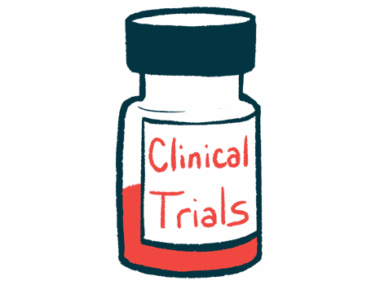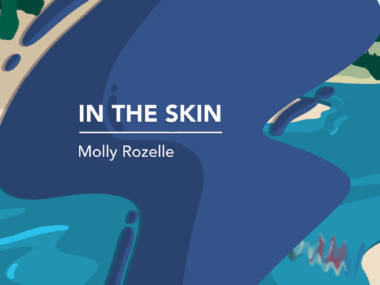Blisters from adhesive dressings complicated my postpartum days
How I managed the wounds on my lower abdomen as a new mom
Written by |

At 20, I welcomed my first child via cesarean section, a moment of joy that came with unexpected challenges because of my mild case of epidermolysis bullosa (EB). While my skin is sensitive and blisters easily, my EB is manageable compared with many others with the condition. Still, the adhesive wound dressings applied after my surgery turned a routine procedure into a painful lesson about living with a rare disease as a young mother.
I had my first son before becoming a registered nurse. At that time, I wasn’t proactive about managing my condition, advocating for myself, or communicating my EB diagnosis to my care team.
The surgery went smoothly, and holding my newborn was magical. But when my OB-GYN removed the adhesive dressings in the hospital the next day, I heard concern in his voice. He told me my skin peeled right off along with the dressings. My lower abdomen was covered with large open blisters that were several inches long and at least an inch wide. The wounds were sore and inconvenient for weeks, complicating my early days as a new mom.
At my follow-up visit, my OB-GYN was clear: “Never let anyone put adhesives on you ever again.” His words stuck with me, and he was sure to place an “adhesive allergy” in my medical chart. As a nurse, I know this label is a shortcut. EB isn’t an allergy — it’s a genetic condition where adhesives physically damage my skin’s delicate structure.
The blisters didn’t require an extensive care regimen, but they demanded attention. I left them open to air to promote healing, gently using a warm, wet washcloth to dissolve the adherence when my T-shirt stuck to the raw patches. Each movement was a reminder of the pain, making it harder to lift my baby or move comfortably. I’m thankful I had my husband and mom there to help care for me and the baby.
Those early postpartum weeks tested my resilience. Balancing newborn care with my discomfort required patience and support from my family. My experience highlighted a gap in healthcare: Even well-intentioned providers may lack awareness of rare conditions such as EB. A simple adhesive can turn routine care into a setback.
Now, years later, I carry the lessons from that time into my nursing practice, where I champion patient-centered care and advocate for those with misunderstood conditions. My mild EB has shaped me, teaching me to adapt and persevere.
For others with EB, I urge you to speak up about your needs — request nonadhesive dressings and share resources with your care team. For healthcare providers, I encourage you to learn about rare diseases to make small changes, such as avoiding adhesives, that can have a big impact.
Despite the blisters, the birth of my first child will forever be one of my most cherished memories and experiences.
Note: Epidermolysis Bullosa News is strictly a news and information website about the disease. It does not provide medical advice, diagnosis, or treatment. This content is not intended to be a substitute for professional medical advice, diagnosis, or treatment. Always seek the advice of your physician or other qualified health provider with any questions you may have regarding a medical condition. Never disregard professional medical advice or delay in seeking it because of something you have read on this website. The opinions expressed in this column are not those of Epidermolysis Bullosa News or its parent company, Bionews, and are intended to spark discussion about issues pertaining to epidermolysis bullosa.







Nisha
Thank you so much for sharing your story, Molly! So true about the importance of advocating for your needs to your care team.
Brenda Keys
Thank you Molly for this informative article! My daughter has EB Simplex, moderate generalized. She too, had a scheduled C Section with her first (and only) child. We were so fortunate that her care team was very interested and absolutely did their homework. They welcomed our input and listened carefully to suggestions. Non adhesive bandages were ordered, a grounded bed was obtained so there was no need for a bovie, non adhesive EKG leads were used - it was truly an amazing experience. Self advocacy and education are so incredibly important with EB or any special need. And for medical personnel to listen closely is equally vital for a successful outcome.